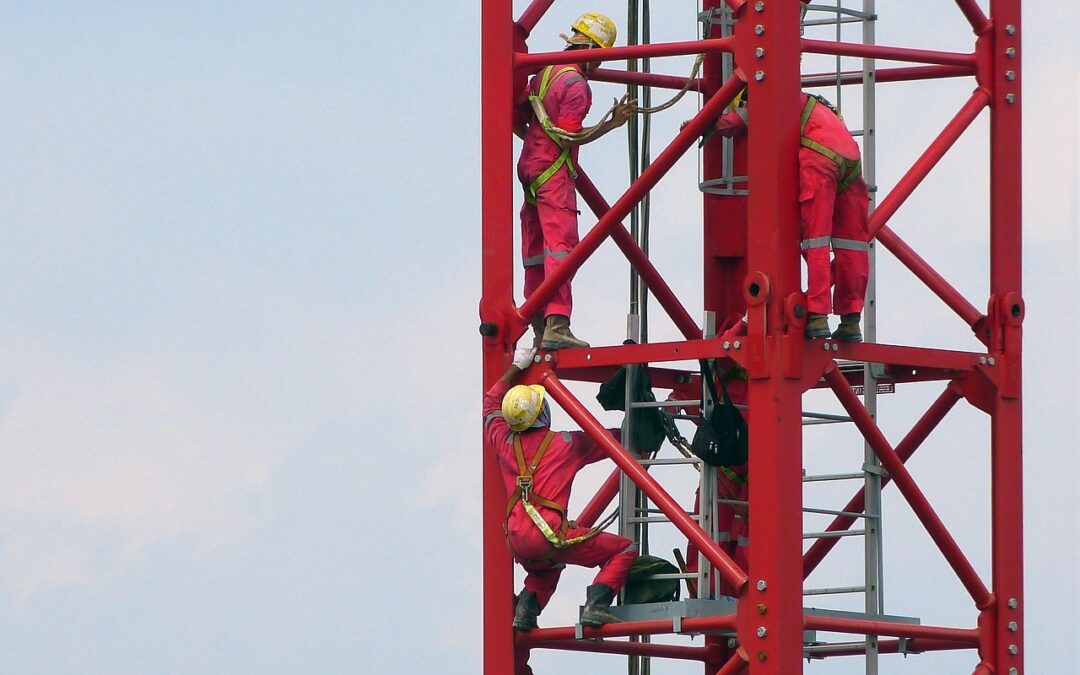Ladders are a daily essential in mining operations—used for everything from inspections and maintenance to emergency escapes. Because of this, ladder safety is important not only for meeting regulations but for protecting the people who depend on them. Mining environments are tough, and with Mine Safety and Health Administration (MSHA), Occupational Safety and Health Administration (OSHA), and American National Standards Institute (ANSI) all having their own standards, navigating ladder safety can feel overwhelming. This article will simplify the key regulations, explain what good ladder design looks like, and share how to keep ladders safe and dependable even in the harshest conditions.
Why Good Ladder Design Matters for Safety and Compliance in Mining
In mining, ladders do more than just provide access—they save lives. When ladders are designed and maintained properly, they offer safe, reliable routes to work areas and emergency exits. But when ladders are poorly made or neglected, they become dangerous hazards. Falls remain one of the top causes of mining accidents, often due to faulty ladder design, slippery rungs, or improper spacing. A well-designed ladder reduces the risk of falls and allows miners to move quickly and safely during everyday tasks or emergencies.
Good ladder design means choosing materials that withstand mining’s harsh conditions, ensuring rungs offer firm footing, and setting angles that make climbing comfortable and safe. It’s equally important that ladders are installed where they’re actually needed and built to support different body types and physical conditions.
MSHA Standards for Fixed Ladders, Travelways, and Escapeways
MSHA sets clear requirements for ladders used in mining. Fixed ladders must be maintained in good condition, securely anchored, and inspected regularly. Travelways and escapeways, which are important for emergency evacuation, must also have safe ladder access.
For example, ladders need to extend at least 3 feet above landings, be free of slippery surfaces, and have proper lighting and clear markings—especially in escapeways. These regulations aren’t just recommendations; they’re mandatory. Failing to meet MSHA standards can lead to fines, work stoppages, or worse, accidents.
MSHA vs. OSHA vs. ANSI: How to Navigate the Different Ladder Standards
With multiple organizations setting ladder rules, it’s easy to get confused. MSHA governs mining-specific safety, OSHA handles general industry and construction, and ANSI provides technical design standards. In mining, MSHA rules always come first, but understanding OSHA and ANSI can strengthen your safety practices.
ANSI’s A14 standards, for instance, detail rung spacing and load capacities, while OSHA emphasizes fall protection and ladder use on surface jobs. Blending guidance from all three helps ensure your ladders meet or exceed safety expectations, especially if your operations cross industry lines.
Building Safe Access: Key Construction Guidelines for New Ladder Installations
When installing new ladders, focus not just on placement but on quality construction. Pay attention to rung spacing, side rail strength, and angle—typically between 70 and 90 degrees—for safe climbing. Ladders must be firmly anchored into stable surfaces, using materials like galvanized steel or fiberglass to resist corrosion.
Designs should support at least four times the expected load, with consistent rung spacing to prevent slips. Install ladders in high-traffic spots like pump stations or loading areas, where they’ll actually be used—because a ladder that’s inconvenient is more likely to be bypassed.
What You’re Responsible For: Ladder Maintenance Rules You Need to Know
Even a sturdy ladder can become unsafe without regular maintenance. Mining companies are responsible for ensuring ladders are inspected and repaired as needed. Inspections should check for damage, corrosion, missing rungs, or loose parts.
MSHA requires visual inspections at specific intervals—especially after events like blasting or heavy equipment use—and these must be documented. Any damage must be fixed promptly to avoid accidents. Maintenance staff should be trained to spot early signs of wear and carry out routine cleaning and hardware checks to keep ladders safe and reliable.
How to Integrate Fall Protection into Your Ladder System from the Start
Fall protection needs to be part of your ladder system from day one—not an afterthought. MSHA mandates that ladders over 20 feet include safety measures like cages, safety lines, or personal fall arrest systems.
Cages help guide climbers and prevent backward falls, while harnesses attached to lifelines offer extra protection during longer climbs. Guardrails at landings and secure anchor points also add safety. But equipment is only effective if workers are properly trained to use it consistently.
Designing Ladders That Can Handle Harsh Mining Environments
Mining conditions are rough—water, chemicals, temperature swings, and constant vibration all take their toll. Ladders that might work fine in a warehouse won’t last underground.
Choose corrosion-resistant materials like stainless steel or coated aluminum, and avoid wood, which can warp or rot. Rungs should be slip-resistant, even when wet or dirty, and side rails must resist bending under pressure. Environmental testing and certifications can help ensure the ladder is up to the task.
Choosing Ladder Systems That Keep Ladders Safe and Reliable for Miners
Ladder systems include more than just the ladder itself—they also involve platforms, landings, cages, and access points. Modular systems that adapt as mine layouts change can keep safety consistent during expansions or site changes.
Work with manufacturers who specialize in mining ladders, since they understand the specific safety challenges and provide MSHA-compliant, durable options. Investing in the right system upfront saves money, time, and prevents injuries in the long run.

What to Look for When Buying Ladders That Meet Safety Standards
When buying ladders, make sure they comply with MSHA, ANSI, and other relevant certifications. Check the ladder’s load capacity, corrosion resistance, ease of installation, and availability of replacement parts. Choose suppliers who provide thorough documentation, including certificates of conformity, user manuals, and installation guides.
If these documents aren’t provided, consider it a red flag. Every ladder purchase sends a message about how much your operation values safety.
Creating Safer Mine Sites Through Smarter Ladder Design and Compliance
Ladder safety is more than just ticking boxes—it’s about building a culture that keeps people safe. Smart ladder design, proactive maintenance, and ongoing training all help prevent accidents before they happen. When everyone—from engineers to equipment operators—understands how important ladders are, the entire mine becomes safer.
Compliance should be your baseline, not the finish line. By going beyond minimum standards and investing in better ladders and systems, mines protect workers, reduce downtime, and avoid costly violations. Every rung on a ladder is a step toward a safer workplace.

